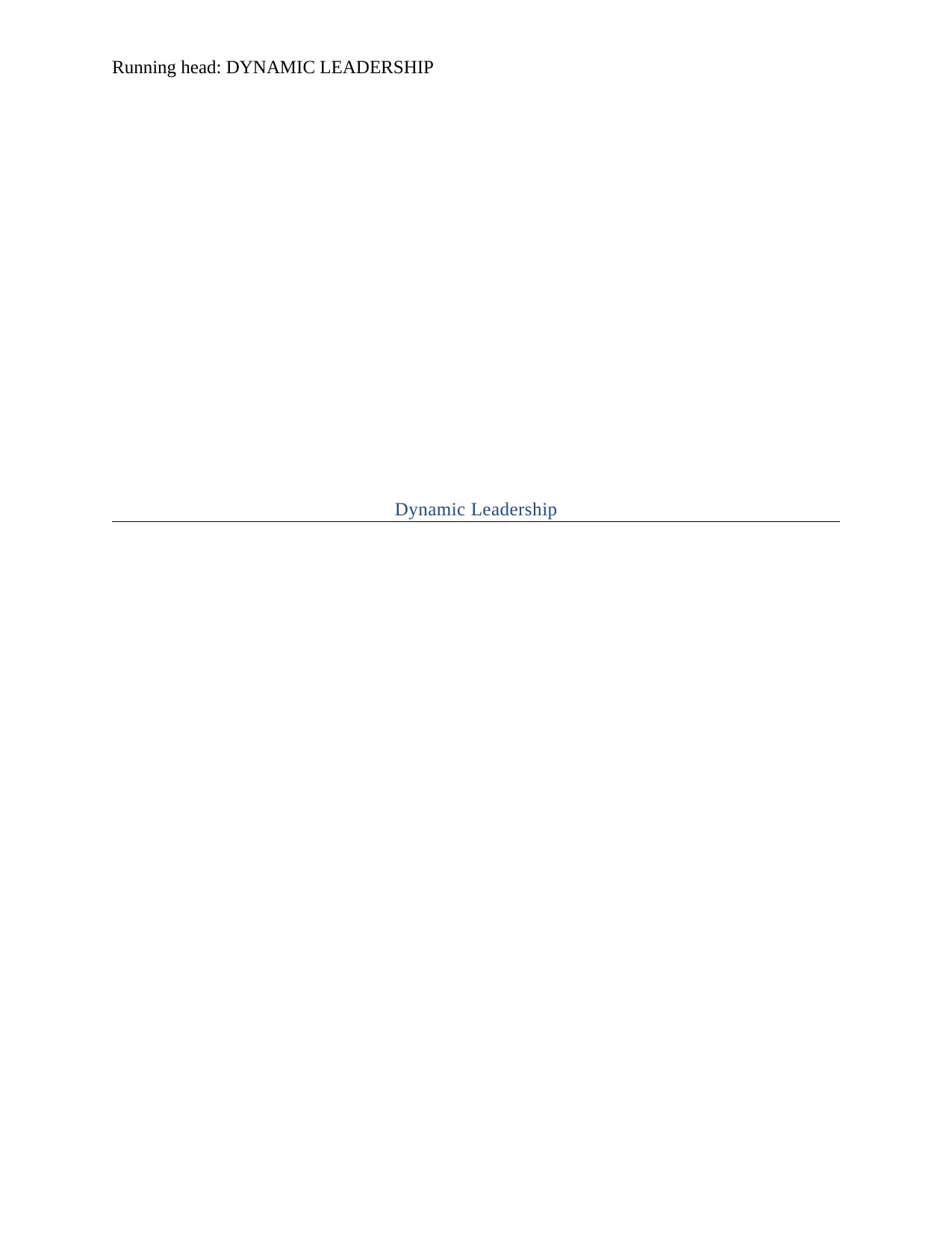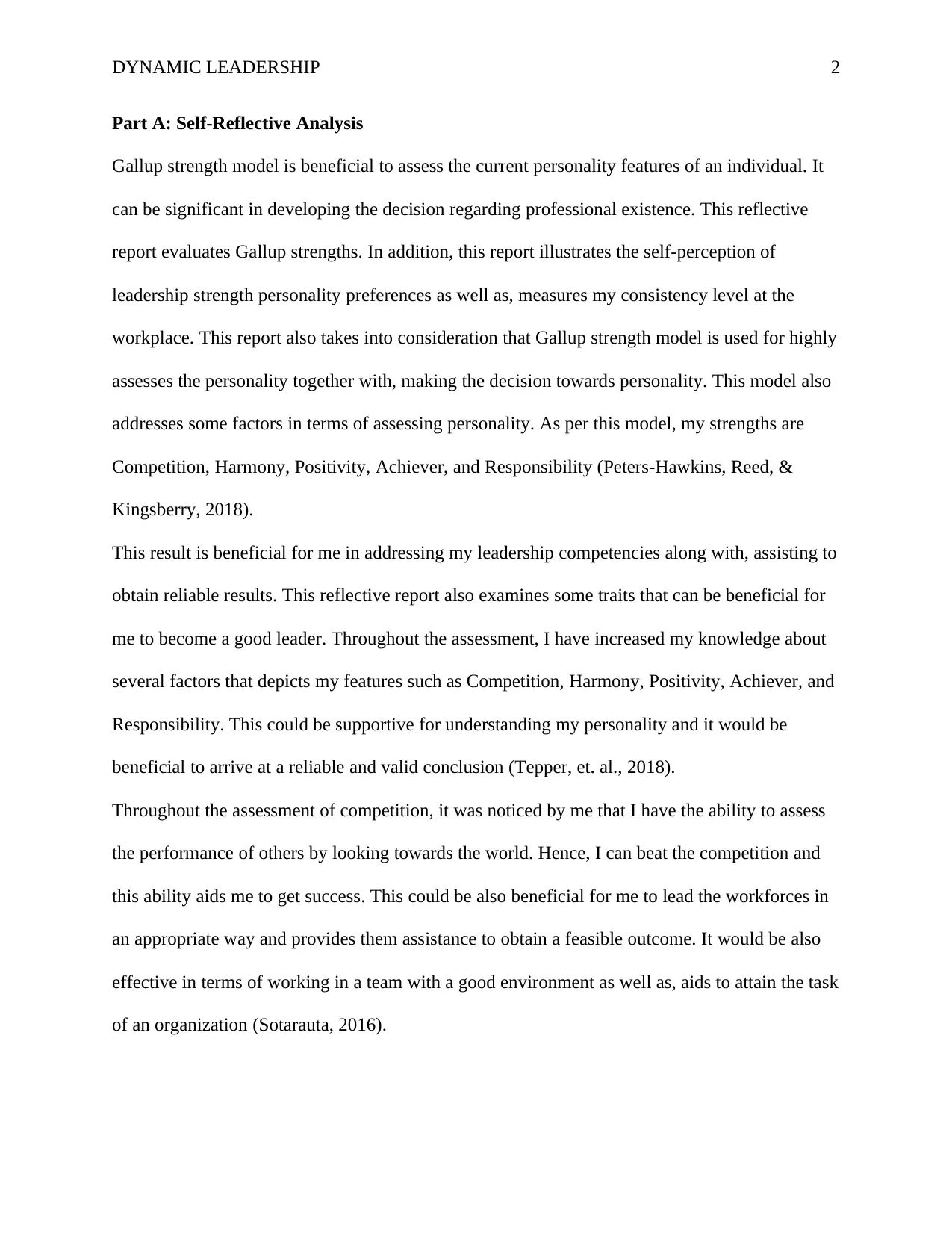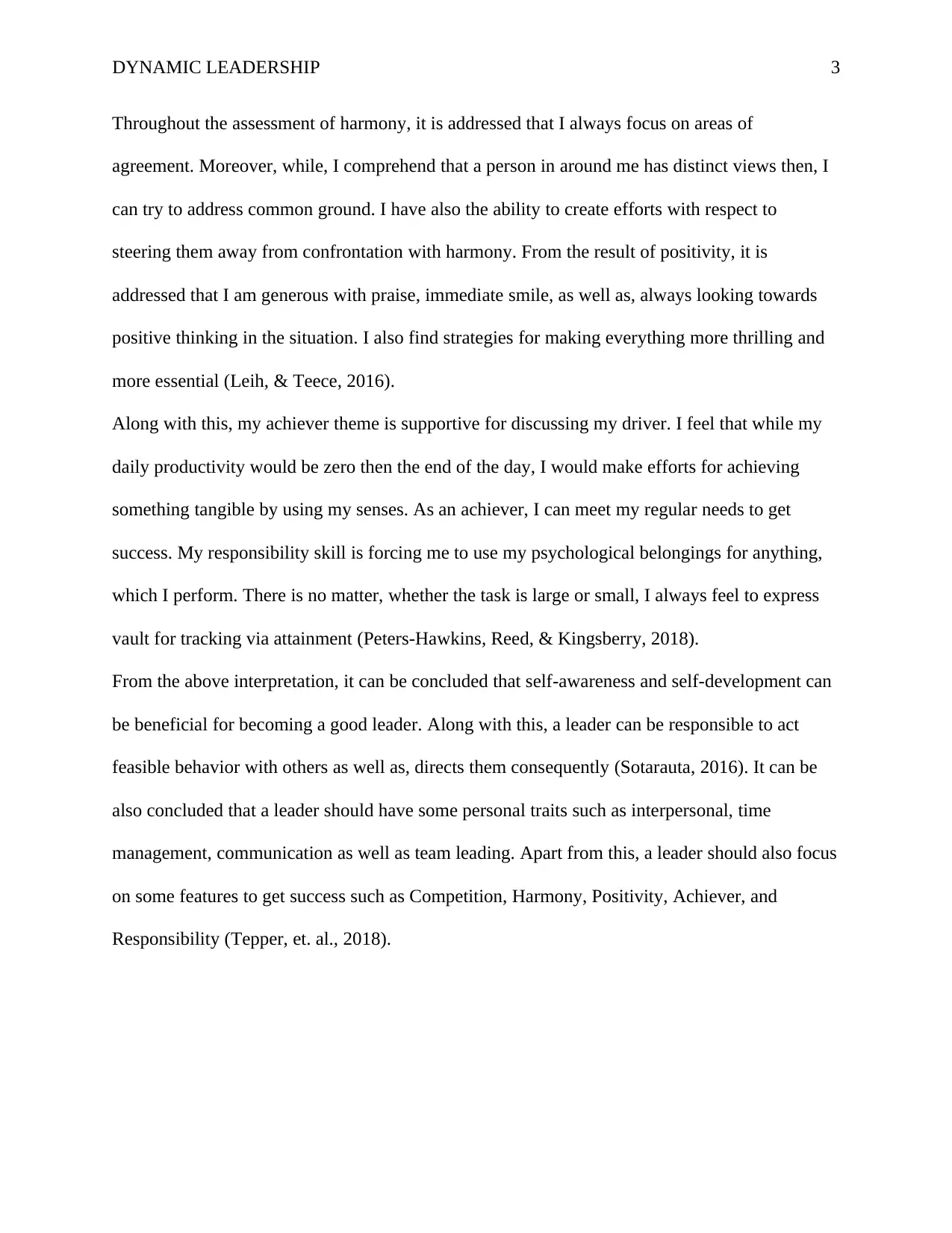MGMT6000 - Dynamic Leadership: Self-Reflective Analysis Report
VerifiedAdded on 2022/12/29
|4
|846
|26
Report
AI Summary
This report provides a self-reflective analysis of dynamic leadership, focusing on the author's leadership journey and personal strengths. The author utilizes the Gallup strengths model to assess their personality traits, identifying Competition, Harmony, Positivity, Achiever, and Responsibility as key strengths. The report explores how these strengths influence leadership competencies and contribute to achieving organizational goals. It further examines the importance of self-awareness, interpersonal skills, time management, and communication for effective leadership. The analysis highlights how the identified strengths can be leveraged to foster a positive work environment, drive performance, and achieve success. The author concludes that self-awareness and development are crucial for becoming a good leader, emphasizing the significance of personal traits and specific strengths in guiding and influencing others. The report references various academic sources to support its claims and provides a comprehensive understanding of the author's leadership style and potential for growth.
1 out of 4











![[object Object]](/_next/static/media/star-bottom.7253800d.svg)